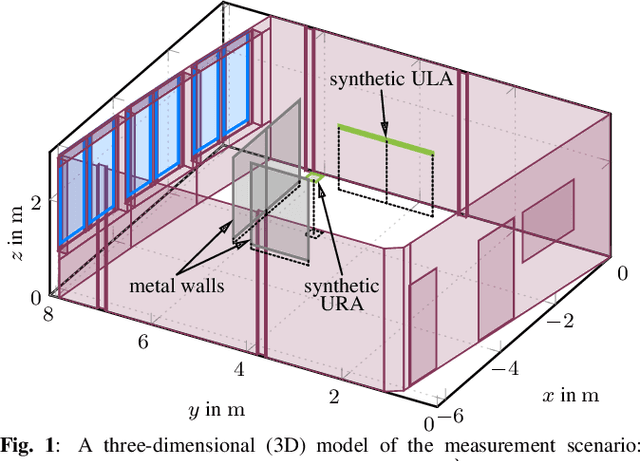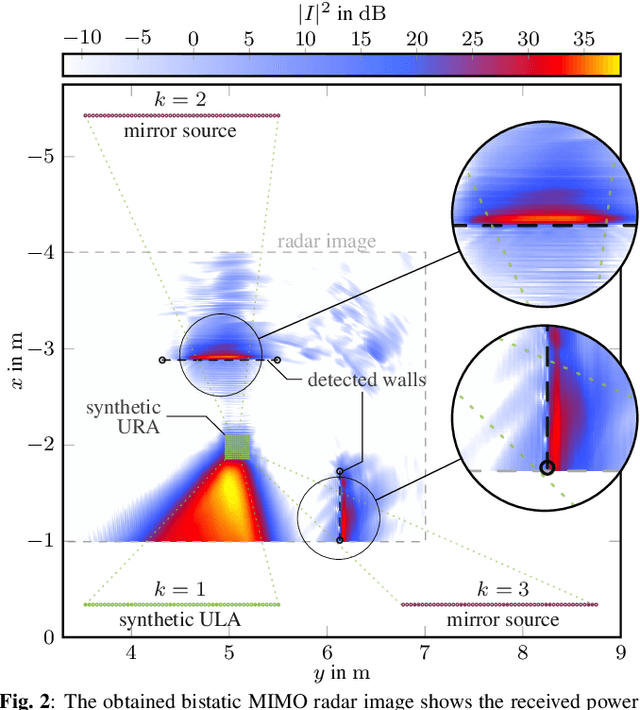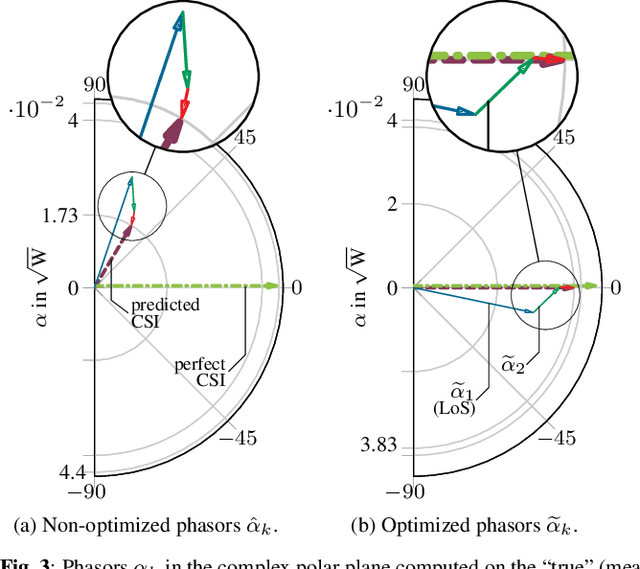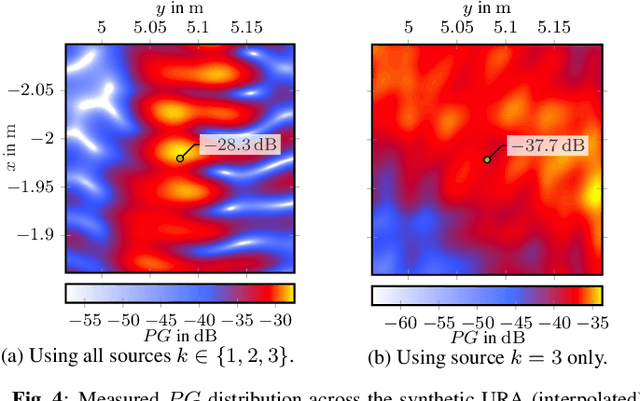Bistatic MIMO Radar Sensing of Specularly Reflecting Surfaces for Wireless Power Transfer
Paper and Code
May 08, 2023



Geometric environment information aids future distributed radio infrastructures in providing services, such as ultra-reliable communication, positioning, and wireless power transfer (WPT). An a priori known environment model cannot always be assumed in practice. This paper investigates the capabilities of detecting specularly reflecting surfaces in a bistatic multiple-input multiple-output (MIMO) radar setup operating at sub-10 GHz frequencies. While rough surfaces generate diffuse reflections originating from their actual position, flat surfaces act like "mirrors," causing directive reflections that virtually originate "behind" them. Despite these propagation characteristics, we can estimate the locations of flat metal walls from reflections at their surface using synthetic aperture (SA) measurements. The performance gain achievable by exploiting this environment information is analyzed by evaluating WPT capabilities in a geometry-based beamforming setup. We show that it is possible to predict channel state information (CSI) with a geometric channel model. Our geometry-based beamformer suffers an efficiency loss of only 1.1dB compared with a reciprocity-based beamformer given perfect CSI.
 Add to Chrome
Add to Chrome Add to Firefox
Add to Firefox Add to Edge
Add to Edge